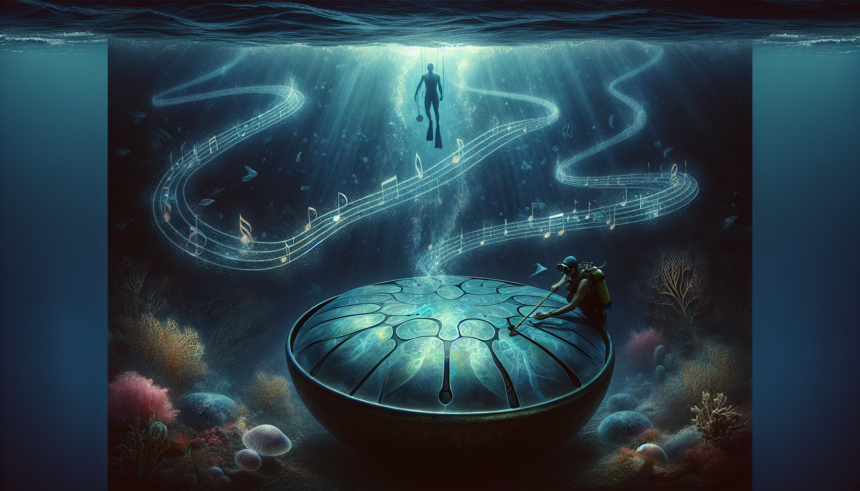The handpan is a unique musical instrument that has garnered a significant following due to its ethereal sounds and capacity for deep emotional expression. Its careful construction and the manner in which it is played allow for an almost meditative and emotional experience, both for players and listeners alike. The magic of the handpan lies not only in its distinct tones but also in how these tones can be used to articulate a wide range of emotions. This article delves into the world of handpan music and how it serves as a powerful medium for emotional expression.
The Origins of Handpan
The handpan, also known as a hang drum, was created in the early 2000s in Switzerland by PANArt, a company founded by Sabina Schärer and Felix Rohner. The development of the handpan marked a significant evolution from traditional steel drums, which originated in Trinidad and Tobago. The handpan, distinguished by its UFO-like shape and melodious resonance, provides a novel approach to musical performance and emotional articulation.
Instrument Structure and Mechanics
The handpan is typically made from two half-shells of nitrided steel, meticulously crafted and tuned to produce harmonious sounds. It consists of a central note called the Ding and several other tone fields arranged around it. When struck with the fingers, these tone fields produce rich, resonant sounds that can evoke a myriad of emotions. The handpan’s design ensures that even simple touches can create soothing, immersive soundscapes.
Playing Techniques and Emotional Resonance
Playing the handpan involves a technique similar to playing a percussion instrument but with a softer, more expressive touch. Musicians use their hands and fingers to tap, stroke, and glide over the instrument’s surface. The way a handpan is played directly influences the emotions conveyed:
- Soft taps: Gentle percussion can evoke feelings of peace and serenity.
- Firm strokes: More defined strikes can convey intensity, urgency, or joy.
- Rhythmic patterns: Complex rhythms can elicit excitement or curiosity.
The handpan’s versatility allows musicians to explore and express a wide range of emotional states, from tranquility and introspection to exuberance and passion. The instrument’s design naturally encourages a mindful and emotionally connected playing style.
The Handpan as a Therapeutic Tool
Beyond its musical appeal, the handpan is increasingly being recognized for its therapeutic benefits. Music therapists and wellness practitioners are incorporating the instrument into their practices due to its calming and meditative qualities. Handpan music has been used to aid in:
- Stress reduction: The soothing sounds can help lower anxiety levels and induce a state of relaxation.
- Emotional release: Players and listeners often find the music helps them process and release stored emotions.
- Mindfulness practice: The focus required to play the handpan can enhance concentration and present-moment awareness.
Therapeutic sessions with the handpan often involve guided playing, where individuals are encouraged to explore their feelings through the instrument’s tones. This active engagement can create a channel for expressing emotions that might otherwise be difficult to articulate.
Handpan Community and Emotional Connection
The global handpan community is passionate and tightly-knit, often coming together through festivals, workshops, and online forums. These gatherings foster not only musical collaboration but also emotional connections among players and enthusiasts. Sharing handpan music within this community allows for a collective exploration of emotions, as individuals bond over their mutual love for the instrument and the music it creates.
Online communities and social media platforms have also played a key role in expanding the reach of handpan music. Video performances shared on platforms like YouTube and Instagram enable musicians to connect with audiences worldwide, spreading the instrument’s emotional impact far and wide.
Conclusion
The handpan is much more than just a musical instrument; it is a vessel for emotional expression and a tool for personal and collective healing. Its unique ability to convey a wide range of emotions through simple, resonant tones makes it a powerful medium for both players and listeners. As the handpan continues to gain recognition, its impact on emotional well-being and community connection will likely grow, further establishing it as a cherished instrument in the world of music and beyond.
Frequently Asked Questions (FAQs)
1. What makes the handpan different from other percussion instruments?
The handpan stands out due to its unique construction and the harmonic richness of its tones. While it is played similarly to percussion instruments, its resonance and ability to produce melodic and percussive sounds simultaneously allow for a broader range of emotional expression.
2. Can anyone learn to play the handpan, or is it difficult?
The handpan is relatively accessible to beginners, especially due to its intuitive design and forgiving sounds. Basic playing techniques can be learned fairly quickly, though mastery of the instrument, like any other, requires practice and dedication.
3. How does the handpan contribute to mindfulness and meditation practices?
The handpan’s soothing and resonant tones can create a meditative atmosphere, making it an excellent tool for mindfulness practices. Playing the handpan requires focus and presence, which naturally aligns with the principles of mindfulness and enhances the meditative experience.
4. Where can I find a handpan, and how much does it cost?
Handpans can be found through specialized instrument makers and online marketplaces. Prices vary widely depending on the maker, material, and tuning, but they generally range from a few hundred to several thousand dollars. It’s important to purchase from reputable sources to ensure quality and authenticity.
5. Are there specific genres of music suited for the handpan?
The handpan is versatile and can be incorporated into various musical genres, including world music, ambient, jazz, and even classical. Its adaptability allows it to complement different styles, though it is particularly valued for its use in meditative and relaxation music.





